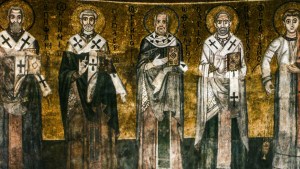Lenten Campaign 2025
This content is free of charge, as are all our articles.
Support us with a donation that is tax-deductible and enable us to continue to reach millions of readers.
Until now, Cyril of Alexandria’sCommentary on the Letter to the Hebrews was known to scholars only through small fragments. Thought to be lost forever, a manuscript of the Classical Armenian translation was found in Matenadaran depositary in Yerevan, Armenia, back in 2020. This year, the English translation has finally been made available.
All the fragments that were known to scholars are present in the Armenian text, which is about 43,000 words long. Cyril’s commentary, though, only goes from Hebrews 1:1 to Hebrews 3:19. Most scholars think that is all the commentary that Cyril ever wrote on this letter. Still, this is a capital Patristic and a critical source for Cyril’s Christology, as explained in the press release sent by Books From Armenia.
Khachik Grigoryan, the editor of the critical Armenian edition, explained that only fragments from the Greek original and Armenian and Syriac translations of Cyril’s Commentary were known until now. According to Dr. P. M. Parvis’ article on the matter, the commentary is mostly directed against the theology of Theodore of Mopsuestia, whom he considered as a kind of proto-Nestorian – although most 4th century theologians considered Theodore’s faith to be orthodox.
Cyril of Alexandria was Patriarch of Alexandria from 412 to 444, when the city was at the height of its influence and power within the Roman Empire. He wrote extensively, and was a major player in the Christological controversies of the late 4th and 5th centuries. Cyril was a central figure in the Council of Ephesus in 431, and his interventions eventually led to the deposition of Nestorius as Patriarch of Constantinople. A Church Father and a Doctor of the Church, he is nicknamed Pillar of Faith and Seal of all the Fathers.



